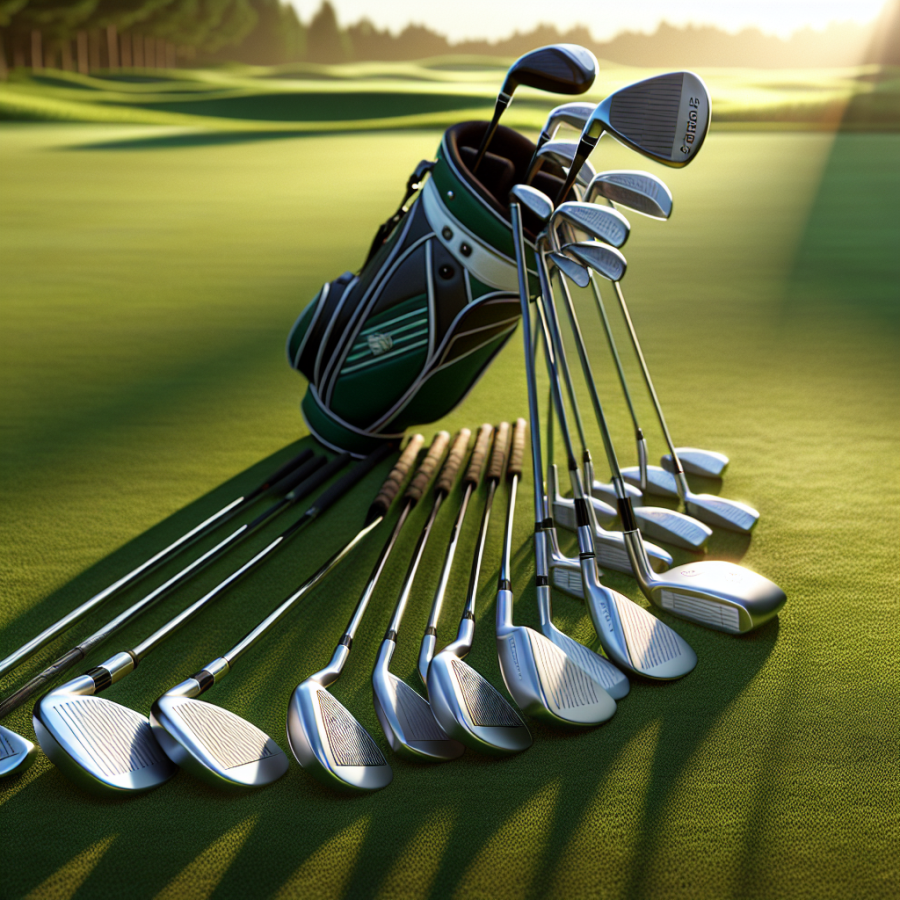Factors that Influence the Pricing of Golf Clubs
There are several factors that influence the pricing of golf clubs, some more obvious than others. Knowledge of these elements can be instrumental in finding the best value clubs for your budget.
1. Brand Reputation and Endorsement: Well-known brands are often priced higher due to their reputation and image. These brands have been successful in establishing trust and reliable performance over the years, qualities that tend to garner higher price tags. Additionally, golf brands endorsed by professional players are seen as aspirational and therefore demand higher prices.
2. Materials Used: The materials used in golf club manufacturing directly influence the cost. Clubs made from titanium or carbon composite are generally pricier than those made from steel due to their lightweight nature and improved performance. The quality of the club grip materials can also raise the cost.
3. Technology and Design: Modern golf clubs highlight dynamic designs and cutting-edge technology, all aimed at improving a player's golfing experience. Features might include adjustable weights and lofts, which allow for customization, or aerodynamic designs that improve swing speed. These technological advancements and intricate designs often result in higher prices.
4. Production Process: Handcrafted clubs with attention to fine detailing are pricier compared to those mass-produced. The production process, which may feature precise clubhead machining or individual shaft frequency matching, requires skilled labor and time, both of which add to the final cost.
5. Target Market: Golf clubs designed for professional players or enthusiasts often come at a premium. These clubs are built for performance, incorporating the latest techniques and technologies, as opposed to clubs aimed at beginners or casual players that focus more on ease of use and are therefore lower-priced.
6. Club Type: The type of club also plays a critical role in determining the price. A set of irons or specialty wedges will generally be more expensive than individual clubs. Similarly, drivers with advanced features are usually on the expensive end of the pricing spectrum.
7. Release Date: Like many consumer goods, the price of golf clubs can be influenced by their release date. New releases, boasting the latest technology and innovations, usually have high initial prices that slowly decrease over time.
8. Custom Fitting: Custom fitted clubs, where the lengths, lofts, lie angles, and grips are tailored to the individual player's swing, also tend to be more expensive than off-the-rack options, due to the personalization and labor involved in their making.
9.
Read also:
Unveiling Palla: A Cultural Journey Through Ancient Sports
Decoding the Expense: High-End vs. Budget Golf Club Options
If you've ever stepped foot into a golf retail store or browsed web pages of golf suppliers, you may have been astounded by the wide range of price variances when it comes to golf clubs. From high-end combinations costing several thousand dollars to budget-friendly alternatives, it can be quite challenging to discern what’s worth the investment and the actual impact on your performance.
One of the primary reasons for this price disparity is the quality and material composition of the golf clubs. High-end golf clubs typically embrace the latest technology, incorporating premium materials such as titanium heads and graphite shafts. These materials are lighter and more durable, which potentially improve power, accuracy, and overall performance. High-end golf club manufacturers also invest resources in extensive research and development processes, all aimed at improving a golfer’s game. That said, you’re not just dependent on these materials for improved performance, but also the technological advancement and the massive amount of innovation and engineering involved in the production of these golf clubs.
Additionally, customization options often drive up the prices of high-end golf clubs. These clubs offer more personalization to fit appropriately into the golfer’s specific needs, such as the right club length, grip size, and the correct clubhead design. From the clubheads' weight to the loft angles, everything can be customized to suit the golfer's swing, boosting their performance on the golf course.
On the other hand, budget golf clubs are generally constructed with cheaper materials such as zinc and steel, designed to be durable yet highly cost-effective. While the lower price tag may be appealing for beginners and occasional golfers, these clubs might lack the high-tech features and customization found in high-end clubs. They’re usually mass-produced in standard sizes, with fewer options for personalization or adjustability. While budget clubs might not necessarily adversely impact your game, they may lack the precision and consistency offered by higher-end options.
However, it's important to note that a more expensive club doesn’t necessarily equate to a better game. A golfer's skill set and experience play a pivotal role in performance on the course. For new golfers or those on a strict budget, opting for less expensive clubs can be a wise decision. This serves as an opportunity to familiarize oneself with the game before making more significant financial commitments. As golfers improve and progress, upgrading to higher-end clubs can be considered.
Choosing between high-end and budget golf club options can be a daunting task.




